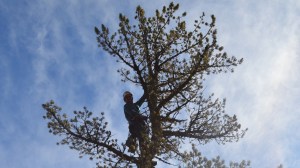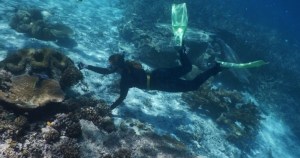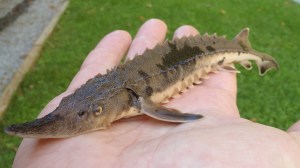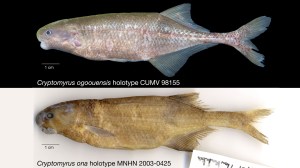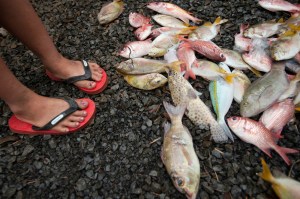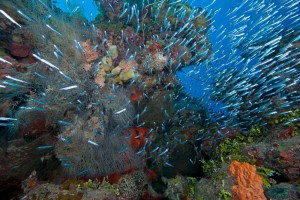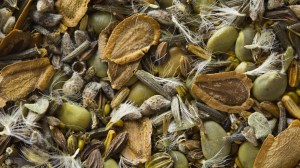Discover stories in Conservation Science
Harvesting Whitebark Pine Cones to Save a Forest
Near the top of the Rockies, crews climb trees and risk danger to collect pine cones. But this isn’t an extreme sport: their work is key to saving one of the West’s iconic trees.
Adventures in Alternative Energy: Giant Clam Edition
The world's largest clams may well hold the missing link to large-scale production of clean biofuels from algae.
Recovery: Saving Lake Sturgeon, an Ancient Fish with a Bright Future
Lake sturgeon, our elders by some 150 million years, have a bright future — if Americans ignore voices of the past.
Mapping Reduced-Impact Logging with Lidar
Nature Conservancy scientists are using lidar ⎯ light pulses beamed down from airplanes ⎯ to map reduced-impact logging in Indonesia.
They’re Electric: Two New Fish Species Discovered in Gabon
Not your typical fish story: Journey to Gabon to encounter two new species of electric fish.
The Path to Sustainable Fisheries is Paved with Data
The SNAPP Data-Limited Fisheries Working Group is field testing a user friendly application that puts management and science-based sustainability within the reach of small-scale and data-limited fisheries.
Recovery: Rehoming Brook Trout, the Dweller of Springs
Throughout its natural range, the brook trout is finding less and less of what it needs most: clean, cold water. But recovery efforts are underway, Ted Williams reports.
Calculating Uncertainty in the Forest Carbon Equation
New research from Conservancy scientists provides a more accurate estimate of forest carbon in Indonesia.
Wiring Up the Caribbean: Designing Marine Protected Areas for Coral Reef Connectivity
New research shows how conservationists can better incorporate coral reef connectivity into marine protected areas.
The Promise and Peril of Wild Seed Harvesting
Planting native seeds harvested from the wild back into damaged ecosystems brings the promise of restoring entire landscapes. But at what cost?
Weird Conservation: The Strange Side of Saving Endangered Species
When scientists need to save an endangered species, sometimes the solution is straightforward. But sometimes, conservation requires that you built a robot, search for poop, or devise a seemingly endless variety of techniques to collect animal semen. Nature is weird, but conservation is weirder.
Recovery: Hope for Black-Footed Ferrets, One of Our Most Endangered Mammals
Recovery of black-footed ferrets seemed unlikely. Many environmentalists, including writer Ted Williams, considered the captive breeding program doomed. Thirty years later, Williams rethinks the situation for one of our most endangered animals.
